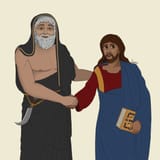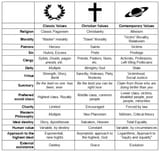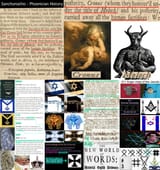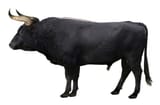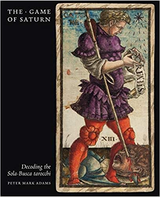Anonymous
8/19/2025, 12:53:23 AM
No.17932942
>>17932948
Moloch-Worshiping in the Middle Ages
There was a group of Mesopotamian Neoplatonists/Hermeticists called the "Sabians", primarily from Harran on the Turkish-Syrian border, who presented themselves as a People of the Book (pre-Islamic monotheists mentioned in the Quran like Jews and Christians) to the Abbasid Caliphate. According to Greek and Islamic sources, when Byzantine Emperor Justinian closed the Academy of Athens, its scholars went to Ctesiphon (capital of the Sasanian Empire which was neighboring Baghdad, capital of the Abbasid Caliphate), Edessa and Harran where they joined the Sabians, that sacrificed children and black bulls, goats, cats to Saturn in a black hexagonal temple.
The Sabians of Harran were a key group in the transmission of Greek texts into Syriac, Arabic, and later Latin in Europe during the Renaissance Italy caused by the Latin looting of the Library of Constantinople (capital of Eastern Roman Empire, the most developed European state of the Middle Ages that preserved Greco-Roman Wisdom and maintained the contact they had with the Orient) during the Fourth Crusade financed by the Republic of Venice and its fall to the Ottomans (a people of Turkish-Mongol origin, these second who were allies of the Venetians, destroyed the Abbasid Caliphate and brought the Black Death to Europe), which caused hundreds of Greek scholars to flee to Italy and reintroduced the Cult of Moloch during the Late Middle Ages and Early Modern Period.
>The ordinary Sabian could not conduct his life by general principles of elevated philosophy such as these. The mass of Harranians followed a complex scheme of ritual, worshipping idols in the temples as representations of the remote and often invisible planets. There were temples, however, not only to the seven planets, but also to the Primal Cause, the First Intellect, World Order, Necessity and the Soul. All these temples were round
Anonymous
8/19/2025, 12:54:44 AM
No.17932943
>>17932948
>The temples to the planets were each, our sources declare, of a special shape—we are reminded of the buildings at Sumatar Harabesi—and each reflected the ideas of those times about the colour and metal peculiar to each planet and the day of the week which it was supposed to govern. The arrangement and order of the temples and the height of the idols conformed to the distance of each planet from the earth
>The temple of Saturn was hexagonal and black, his statue was of lead, his day Saturday; the temple of Jupiter was triangular and green, his statue of tin, his day Thursday; the temple of Mars was oblong (or square?), his colour red, his statue of iron, his day Tuesday; the temple of the sun was square, his statue was of gold, his day Sunday; the temple of Venus was probably a triangle inside a rectangle and it was blue, her statue was of copper, and her day Friday; the temple of Mercury was probably a triangle in an oblong, it had no allotted colour, Mercury's statue was of clay and his day Wednesday; the temple of the Moon was probably octagonal, her statue—the moon was now regarded as female—of silver, and her day Monday
>Each of the planets had influence over a special category of persons—Saturn over persons of authority, Jupiter over wise men and philosophers, Mars over men of violence, the Sun over persons of distinction, Venus over women, children and artists, Mercury over men of learning and science, the moon over cultivators and vagrants. Each planet, too, had its own temperament; Saturn and Mars, in particular, were malevolent. The right time for prayer was fixed by observation of the station of the planet in the sky. The suppliant, dressed in the colour and style appropriate to the planet—in praying to Jupiter, it should be noted, the suppliant wore the 'volume of the Haniphites' around his neck —offered incense according to prescribed formulae
Anonymous
8/19/2025, 12:56:14 AM
No.17932944
>>17932948
>The incense of Saturn contained opium and the skull of a black cat, and that of Mars contained human blood; the incense to the sun and moon is called respectively the 'greater' and the 'lesser incense of the Haniphites'. We have an account of the prayers to each planet, the name of its special angel, its magic appellation, and its chosen victim for sacrifice—Saturn demanded a black he-goat, Jupiter a white lamb, Mars a striped cat, the Sun a crested cock, Venus a white pigeon, Mercury a white cock, the moon a small calf
>Much has been written on human sacrifice among the Harranians. On 8th Ab (August), at the pressing of new wine in honour of the gods, they are said to have sacrificed a newly-born male child, and to have employed the flesh with the addition of flour, saffron, spikenard, cloves and oil, as the food at the mysteries. (One writer, however, declares that this sacrifice was performed whenever the earth was five degrees in the ascendant or the reverse.) The allegation must be rejected, at any rate for the Moslem period
>Al-Dimashqi in the 14th century goes so far as to declare that human sacrifice appeared in Sabian rites directed to every planet—except, significantly enough, to Saturn to whom a bull was offered. To Jupiter, he maintains, was sacrificed an infant born of a bought (in Arabic Jupiter is the 'buyer') woman, the infant's mother to the sun, to Mars a redhaired man, to Venus a whitehaired woman, to Mercury a cultured youth, to the moon a fair man. This cannot be taken seriously. Al-Dimashqi's taste for the horrific is shown by his story that the idol of Mars held a bloody head in one hand; from an earlier writer we learn that it was a burning torch, not a human head!
>There are three accounts of a severed human head which uttered oracles in the Harranian temples, one account in each of the 8th, 9th and 10th centuries. But in one important detail the accounts vary
Anonymous
8/19/2025, 12:58:44 AM
No.17932946
>>17932948
>One maintains that the head was dedicated to Mercury, another to Mars, while the third states that the ceremony took place in the temple of the Moon. Al-Biruni declares that the Sabians sacrificed children to Saturn
>Elsewhere he writes that the Sabians were notorious for human sacrifice, but 'at present they are not allowed to carry it out in public'. We may wonder whether it was ever performed during the Christian era. With one dubious exception, no Christian chronicler indicts the Harranian pagans with this offence. An explanation for the naive reports of Moslem writers may be found in the Syriac history of Bar Hebraeus, which was compiled from earlier sources. Ibrahim, governor of Harran in the 9th century, permitted the Harranians to celebrate their mysteries in public. They led in procession, our chronicler relates with distaste, a bull decorated with garlands of flowers and bells, and accompanied by singers and musicians; it was then solemnly sacrificed
>This bull is evidently the sacrificial victim to Saturn of al-Dimashqi. We read of it elsewhere. It was wholly black—an unusual colour in Harranian sacrifices. It was fed with grass plucked by virgins at sunrise. Drawn by a chain of gold, with incense burning before it and amid prayers, it was taken to the place of sacrifice. Its head was smeared with salt and wine, it was decapitated and its organs were examined for omens
>We may find here the origin of the stories of the human victim placed in a bath of sesame oil and fed with figs for the period of one year; then, rumour had it, the severed head would advise the Sabians for one year—others held one week—on their scientific and economic affairs. The stories derive from a popular Harranian proverb—'he is in oil', that is, he is in distress. Not unrelated is the phrase 'preparation of the head', a well-known term among alchemists
Anonymous
8/19/2025, 1:00:52 AM
No.17932949
>>17932950
>>17932948
Picrel book explains the modern origin of the Cult of Moloch in Medieval Western Europe through the Italian Renaissance.
https://welib.org/md5/9af7ea570f51cdbb46a90561b930f304
>The Game of Saturn is the first full length, scholarly study of the enigmatic Renaissance masterwork known as the Sola-Busca tarot. It reveals the existence of a pagan liturgical and ritual tradition active amongst members of the Renaissance elite and encoded within the deck. Beneath its beautifully decorated surface, its imagery ranges from the obscure to the grotesque; we encounter scenes of homoeroticism, wounding, immolation and decapitation redolent of hidden meanings, violent transformations and obscure rites
>For the first time in over five hundred years, the clues embedded within the cards reveal a dark Gnostic grimoire replete with pagan theurgical and astral magical rites. Careful analysis demonstrates that the presiding deity of this ‘cult object’ is none other than the Gnostic demiurge in its most archaic and violent form: the Afro-Levantine serpent-dragon, Ba’al Hammon, also known as Kronos and Saturn, though more notoriously as the biblical Moloch, the devourer of children
